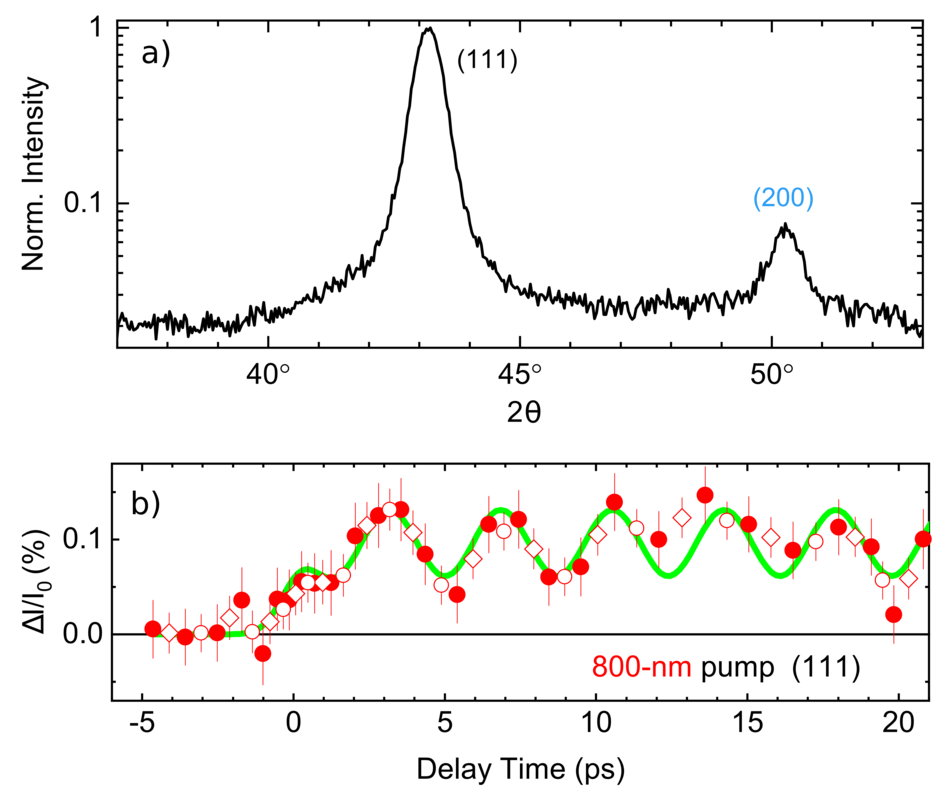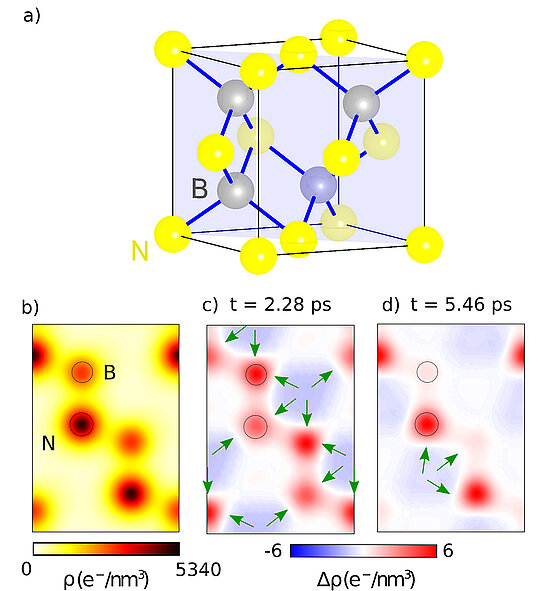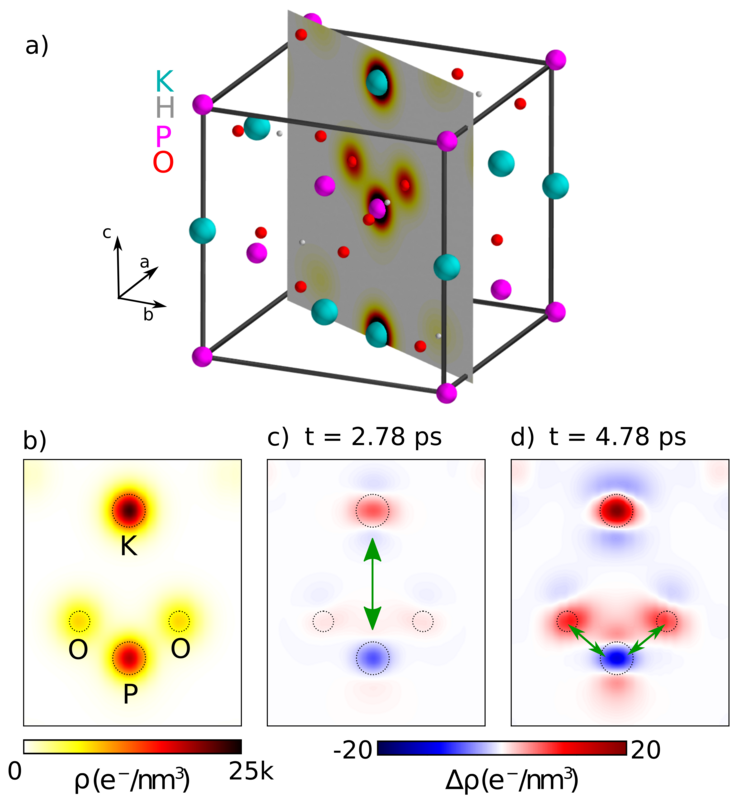This crystal lattice consists of a large number of unit cells with an identical atomic arrangement. In the elementary adiabatic picture, the motions of electrons in the crystal follow the motion of the atomic nuclei instantly, i.e., atomic nuclei and electrons are moving as a single entity. While this physical picture is valid for the inner, so-called core electrons of an atom it fails for the valence electrons, which are shared by different atoms within its unit cell. A special type of phonons, the soft modes, can relocate electrons and, thus, change the electric properties of a crystal considerably. The properties of soft modes have been investigated for decades but are not sufficiently understood. A key prerequisite for a better understanding is to map atomic vibrations and charge motions simultaneously. This can be done by femtosecond x-ray diffraction.
Researchers at the Max Born Institute in Berlin have now elucidated in space and time concerted electron and nuclear motions in crystalline solids. As they report in two recent publications [1,2], phonon motions drive electrons over distances in the crystal which are about 500 times larger than the nuclear displacements. Femtosecond x-ray powder diffraction experiments on two prototypical crystals, cubic boron nitride (cBN) [1] and potassium dihydrogen phosphate (KH2PO4, KDP) [2], an ionic material, lead to the discovery of two related phenomena. (i) Excitation of acoustic zone-boundary phonons in cBN is connected with to a relocation of valence electrons from interstitial regions of the unit cell onto the atoms, thus sharpening the electron distribution in space. (ii) Coherent excitation of a low-frequency soft mode in paraelectric KDP results in a long-lasting, so-called underdamped swinging of electrons between atoms.
The team has implemented a Raman pump ˗ x-ray-diffraction probe technique in combination with the Maximum Entropy Method (MEM) for charge density analysis to take a series of snapshots of electron density within the unit cell of the respective crystal. X-ray diffraction is very sensitive to both atomic and valence charge, thus representing a perfect tool to map nuclear positions and valence charge density on atomic length and time scales. In the experiments, an ultrashort optical pulse triggers atomic phonon motions in a powder sample, consisting of small crystallites, via impulsive Raman excitation (the pump). Femtosecond hard x-ray pulses (the probe) are diffracted from the excited sample and generate a diffraction snapshot of the momentary charge arrangement in the unit cell of the crystal. Changing the arrival time of the probe pulse relative to the pump pulse allows for recording a diffraction pattern for each pump-probe delay, resulting in a movie of the promoted nuclear and electronic motions. Off-resonant impulsive Raman excitation ensures that the crystal remains in its electronic ground state.
Figure 1 shows the transient intensity of (111) Bragg reflection from cBN after second order Raman excitation of acoustic zone-boundary phonons [1]. The observed increase of diffracted intensity demonstrates most directly a relocation of valence electrons from interstitial regions of the unit cell onto the atoms, as visualized in the transient electron density maps for different pump-probe delays (Fig. 2). The oscillations originate from a coherent superposition of phonons with a slightly different frequency.
Fig. 3 displays transient electron-density maps of paraelectric KDP for two pump-probe delays after coherent excitation of a soft mode [2]. The oscillatory motion of the nuclei leads to a long-lasting swinging of electrons between atoms in the ionic unit cell. This behaviour is in striking contrast to predictions from literature and due to the longitudinal character of the nuclear motions. The electron density maps exhibit both a valence-charge transfer between the K and P atoms [panel (b)] and a pronounced electron relocation within the phosphate ion from the P to the O atoms [panel (c)].
Most interesting is the fact that in both cases the observed relocation of electronic charge occurs on the length scale of interatomic distances, i.e., several angströms (10-10 m) whereas the underlying nuclear displacements occur on the sub-picometer (10-12 m) scale. In this way, the electrostatic energy content of the crystal is minimized during the period over which the phonon excitations exist. These findings serve as a benchmark for developing an adequate quantum description of soft modes and pave the way for future studies of a broad range of functional materials with, e.g., ferroelectric properties.




